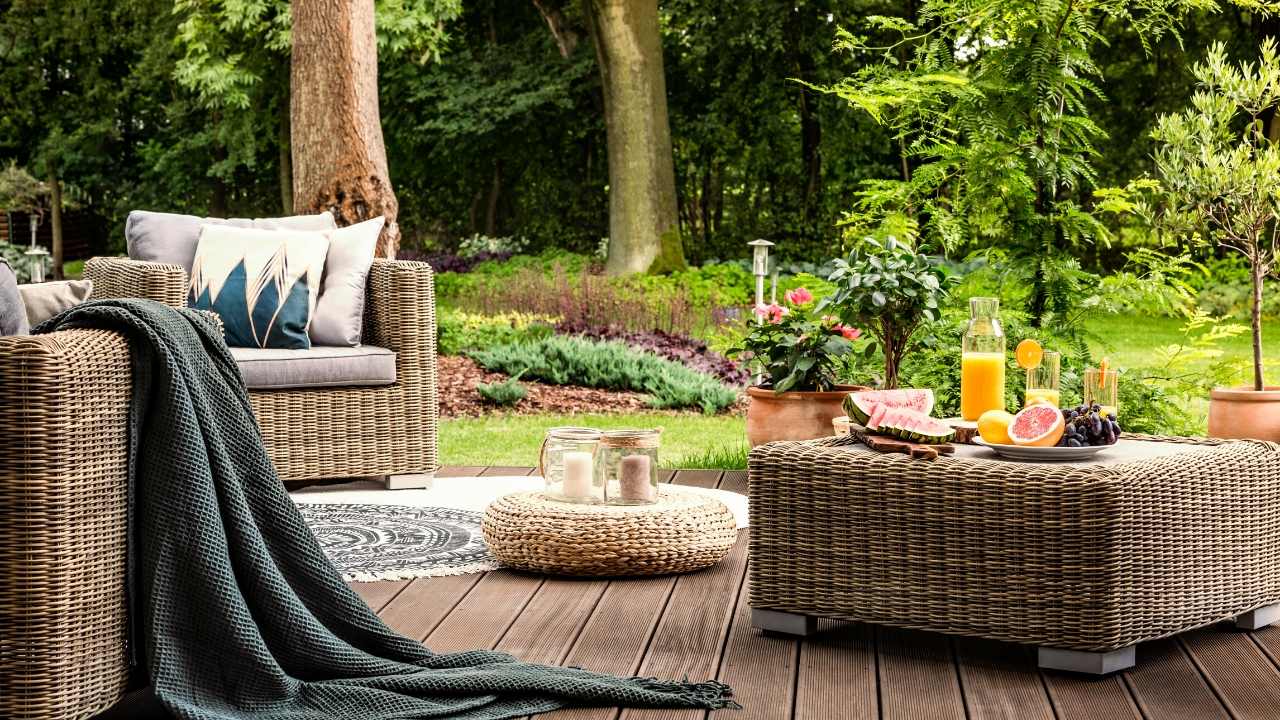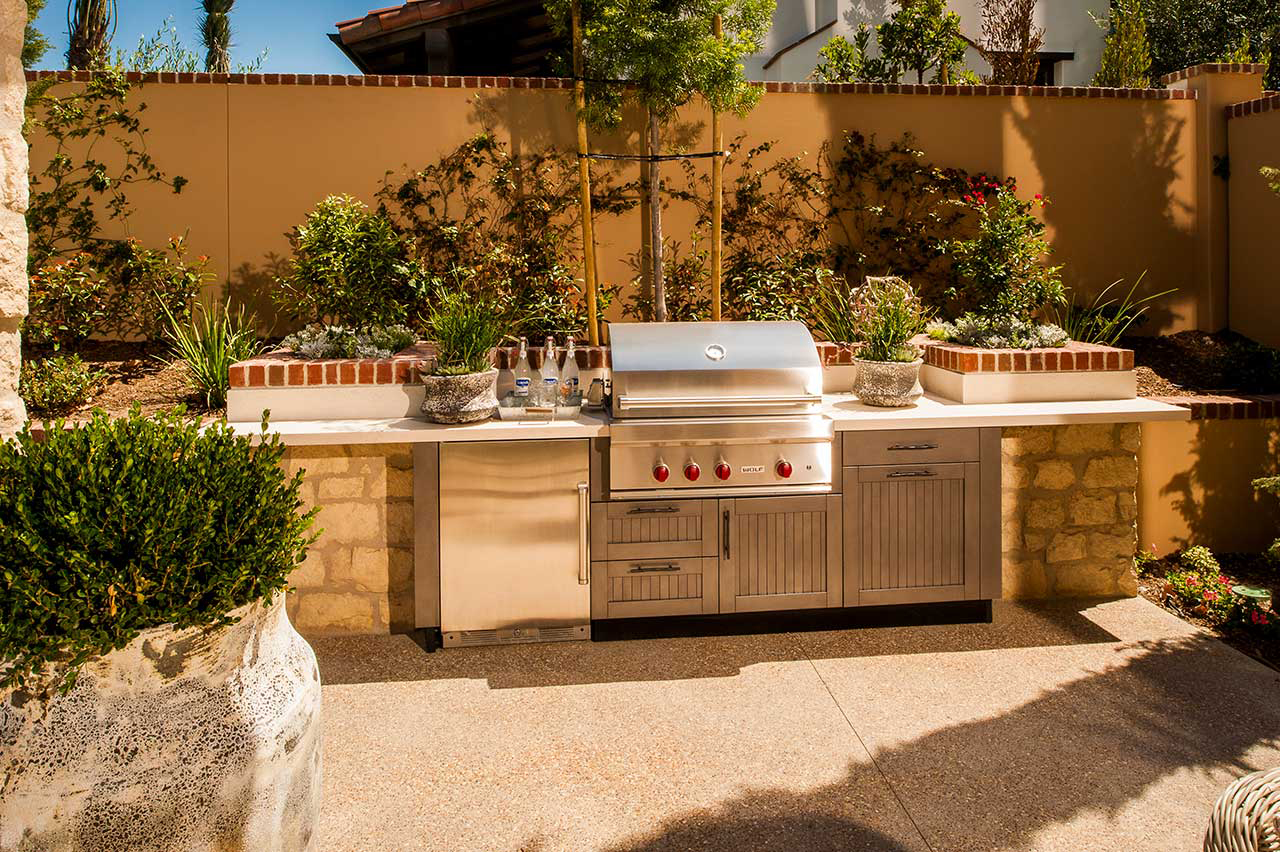
When it comes to pool decking, there are many choices. You have the option of a wood-like, natural deck or one with concrete stamping. A unique stone-like pattern is used on the largest section of the deck. You have the option of staining or painting concrete in many colors. These options will compliment your pool and home. Here are some of the best materials for pool decking.
Although tile can be slippery when wet it is very popular for swimming pools. While it can seamlessly transition indoors and outdoors, the high-gloss finish can make it dangerous for children. The porcelain tile is also resistant to frost. Unglazed Terracotta is more secure than glazed tiles because it has a tooth. For pool decks, unglazed terracotta is the best choice.

It can be difficult choosing a color that will complement your home. There are many choices available, but you have to take into account the material's ability to withstand wear. Wood is an excellent choice for a beautiful and durable surface. If you are looking to make your pool stand out, however, you might choose a darker colour. You can also choose concrete in a square design if you prefer a darker look.
Choosing a shaded area around the pool can make the area more relaxing. It is possible to plant trees and shrubs around a pool. Pebble stone can be used to cover the ground. Trees can provide a bit of shade and will make it easier for people to swim in the evening. Be sure to plant trees at least fifteen feet away from the pool's edge. It is important to consider the location of your trees and shrubs when you are choosing them.
The right landscaping can make your pool look better. A garden can bring color to your pool deck and make it more appealing. You can choose plants that match the color of your swimming pool. A lush lawn and green garden will give your pool a natural and calm appearance. You can even place water features on the floor. You have many options to enhance the appearance of your surrounding area with pool decking.

You can mix materials on your pool deck. The space will look more interesting if you use different materials. You can mix and match various types of materials to suit your needs, depending on what you have available. Combining wood and concrete can give you a beautiful look. You can also use a combination of wood and concrete. You can combine these two options. The best option is one that suits your style and your home.
FAQ
What time does it take to finish a home remodel?
It all depends on the project's size and how many hours you spend each week. The average homeowner spends between three to six hours per week on the project.
What should I do first in a house renovation?
Fixing up a home starts with cleaning out all the clutter from inside and outside. Next, you need to remove any moldy areas, replace damaged walls, repair leaky pipes, and repaint the entire interior. Next, clean the exterior surfaces and paint.
Can I rent a dumpster?
A dumpster can be rented to dispose of your debris after you have completed your home renovation. Renting out a dumpster is an excellent way to keep your yard tidy and free from debris.
What can I do to save money on my home's renovation?
Doing the majority of the work yourself can help you save money. You could, for example, try to reduce the number of people involved in the renovation. It is also possible to cut down on the cost of materials during renovations.
What is the cost of renovating a house?
Renovations typically cost anywhere from $5,000 to $50,000. Renovations are typically a major expense for homeowners, with most spending between $10,000 and $20,000
You can live in a house while it is being renovated.
Yes, I am able to live in a house and renovate it.
Are you able to live in your house while the renovations are ongoing? It depends on the length of the construction. If the renovation takes less than two months, then you can live in your house while it is being built. You cannot live in the home while renovations are taking place if they last more than 2 months.
You should not live in your house while there is a major building project underway. This is because you could be injured or even killed by falling objects on the construction site. A lot of heavy machinery is used at the jobsite, which can lead to noise pollution and dust.
This is especially true if you live in a multi-story house. This is because the vibrations and sound created by construction workers could cause serious damage to your property.
You'll also need to cope with the inconvenience of living in temporary housing while your house is being renovated. You won't have all the amenities of your home.
As an example, your washer and dryer will be out of commission while they are being repaired. In addition to the unpleasant smells of chemicals and paint fumes, you will have to endure the noises made by workers.
All these factors can result in stress and anxiety within your family. So it is important that you plan ahead so you don't feel overwhelmed by all the circumstances.
Research is key when you are considering renovating your home. It will save you money and help you avoid costly mistakes.
You can also consider professional advice from a trusted contractor to ensure smooth running of your project.
Statistics
- ‘The potential added value of a loft conversion, which could create an extra bedroom and ensuite, could be as much as 20 per cent and 15 per cent for a garage conversion.' (realhomes.com)
- The average fixed rate for a home-equity loan was recently 5.27%, and the average variable rate for a HELOC was 5.49%, according to Bankrate.com. (kiplinger.com)
- A final payment of, say, 5% to 10% will be due when the space is livable and usable (your contract probably will say "substantial completion"). (kiplinger.com)
- On jumbo loans of more than $636,150, you'll be able to borrow up to 80% of the home's completed value. (kiplinger.com)
- Most lenders will lend you up to 75% or 80% of the appraised value of your home, but some will go higher. (kiplinger.com)
External Links
How To
How do I plan a whole house remodel?
Planning a whole-house remodel requires planning and research. There are many things you should consider before starting your project. You must first decide what type home improvement you want. There are many categories that you could choose from: kitchen, bathroom or bedroom; living room or dining room. Once you've chosen the category you want, you need to decide how much money to put towards your project. If you do not have any previous experience in working with homes, it is best that you budget at least $5,000 per bedroom. If you have some experience, then you might be able to get away with less than this amount.
Once you have established how much you are able to afford, you will have to decide on how big a job to do. For example, if you only have enough money for a small kitchen remodel, you won't be able to add a new flooring surface, install a new countertop, or even paint the walls. If you have the money to do a complete kitchen remodel, you will be able to handle almost anything.
Next, find a contractor that specializes in the project you are interested in. You will be able to get great results and avoid a lot more headaches down in the future. Once you have found a reliable contractor, it is time to start gathering supplies and materials. You may need to purchase everything from scratch depending on the size and scope of your project. There are many stores that offer pre-made products so it shouldn't be difficult to find what you need.
Once you've collected all the materials you will need, you can begin to plan. You will first need to sketch out an outline of the areas you plan to place appliances and furniture. Next, plan the layout. Remember to leave enough space for outlets and plumbing. You should also place the most frequently used areas closest to the front door, so visitors have easy access. Finally, you'll finish your design by deciding on colors and finishes. You can save money by using neutral colors and simple designs.
Once you have completed your plan, it is time to begin building. Before you start building, check your local codes. While some cities require permits, others allow homeowners to construct without them. You will need to first remove all walls and floors that are not required for construction. You will then lay plywood sheets to protect your new flooring. Next, you'll attach the wood pieces to the frame of your cabinets. Finally, attach doors and windows.
You'll need to finish a few final touches once you're done. You'll likely want to cover any exposed wires and pipes. You will need to use tape and plastic sheeting for this purpose. Also, you will need to hang mirrors or pictures. Keep your work area tidy and clean at all times.
You'll have a functional home that looks amazing and is cost-effective if you follow these steps. Now that you have a basic understanding of how to plan a house remodel, it's time to get started.